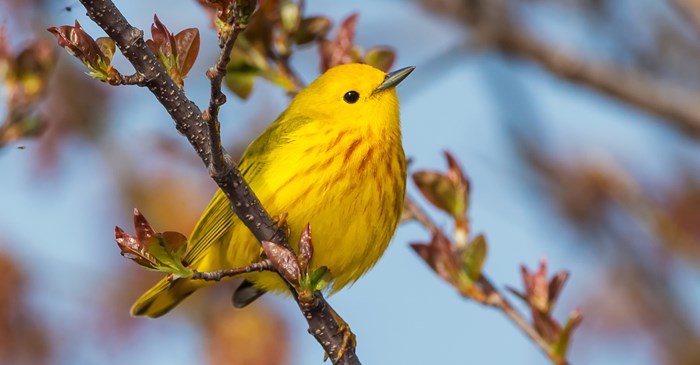How do scientists know where birds go in winter?
Traditionally, the only way to find out where an individual bird went was to capture and mark it, then wait for someone to find it again by chance. Though the odds are small, sometimes birds are recovered far from where they were originally captured. For example, over a period of 40 years, biologists at the Long Point Bird Observatory in Ontario, Canada, placed aluminum bands on the legs of 39,044 Swainson’s Thrushes. Only two of these thrushes were recovered on their wintering grounds, by members of the Asheninka native community in northern Peru!
In recent years, satellite transmitters have given scientists an unprecedented opportunity to track birds around the globe. The transmitters emit signals that are picked up by space satellites and reported to a computer back on earth. Using this technique, scientists have documented a Peregrine Falcon migrating from Alberta, Canada, to Mazatlán, Mexico. They have tracked Swallow-tailed Kites from Florida and Georgia to previously unknown wintering grounds in Brazil, some 5,000 miles away. A Swainson’s Hawk traveled from California to the pampas of Argentina, where it revealed a gathering of thousands of other Swainson’s Hawks, including hawks that had been banded in California, Colorado, and Saskatchewan, Canada.
In most cases, ornithologists know little about exactly where birds from particular regions spend the winter. Often the best information they have is based on where the species is found at different times of the year. North American birds vary widely in their travels. Some 200 Neotropical migrant species, including many shorebirds, hawks, hummingbirds, and songbirds, spend the winter in Latin America or the Caribbean. Others migrate within North America, such as American Robins and American Goldfinches. Some, such as Northern Cardinals and Western Scrub-Jays, stay resident year-round. The migration of other species, such as Red-breasted Nuthatches, varies depending on the region and annual changes in food supplies.
The wintering ranges of many bird species are still poorly mapped. The Cornell Lab of Ornithology citizen-science participants have contributed to a better understanding of migration by documenting changes in bird numbers at their feeders and by reporting their sightings to the Lab.
Many of the birds I usually see at this time of year have disappeared. What happened to them?
There are many reasons why birds may suddenly disappear. If the species is migratory, it may have departed early. Each year, the timing of migration varies within a window of several weeks, depending on natural food supplies and the weather. In other cases, birds that normally spend the fall in your area may have moved in response to fluctuations in pine cone crops or seeds. It's also possible that some birds are still in your area but have molted into a less recognizable fall plumage. American Goldfinches, for example, replace their bright yellow feathers with drab ones.
Keep in mind that bird populations fluctuate naturally with the seasons, and from one year to the next. Ornithologists use long-term data to see whether declines in bird species are cause for worry or are within the range of normal variation. For the latest results, visit the Project FeederWatch website.
Republished with permission. Originally published by in “Bird Notes from Sapsucker Woods,” Cornell Lab of Ornithology, 2004.
